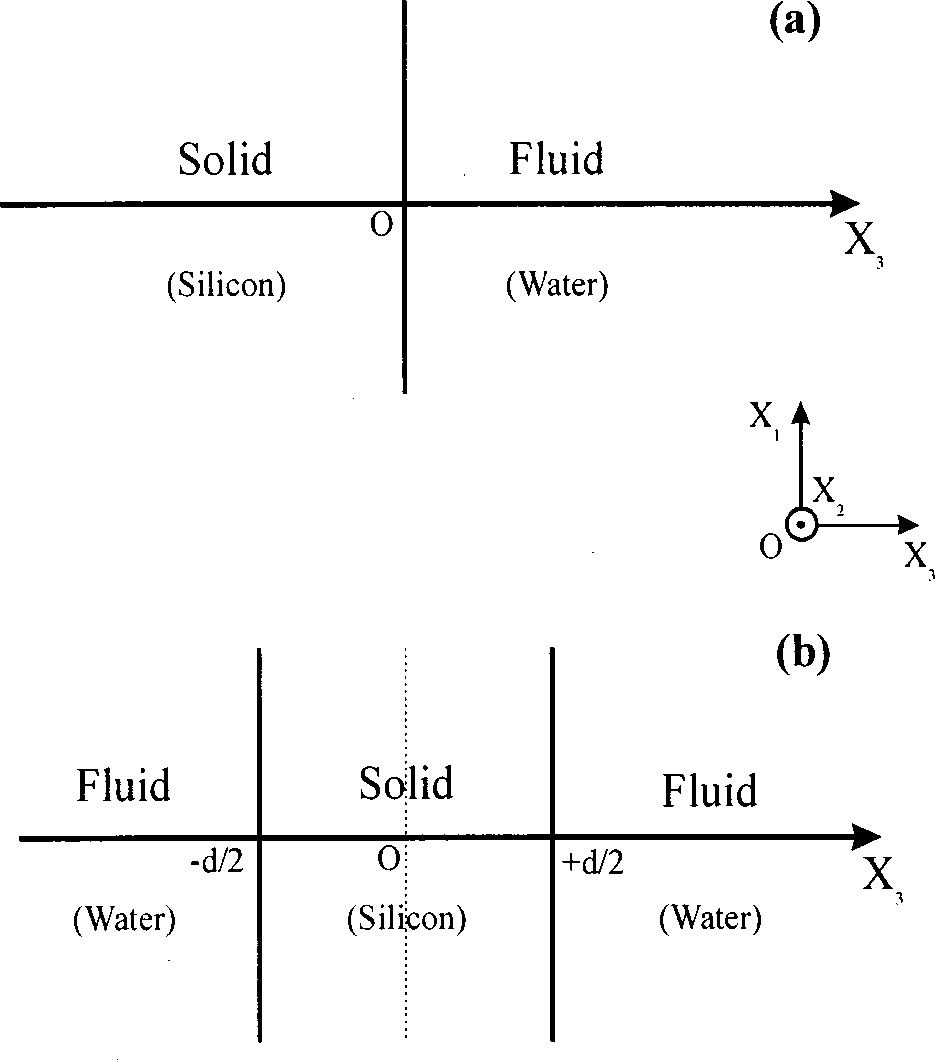Megasonic waves have been extensively used to remove contaminant particles from silicon wafers during manufacturing of semiconductor devices. In this process, planar silicon wafers are immersed in a water-based solution and subjected to a beam of sonic energy with a frequency in the range 600 KHz–1 MHz. The acoustic wave propagates typically along directions parallel to the wafer/flfluid interface. Much of the work in the area of megasonic cleaning has been directed towards fifinding conditions such as megasonic power and duration of fifield to optimize particle removal. Several processes are known or believed to be operative in a megasonic fifield, namely microcavitation, acoustic streaming, and pressure induced chemical effects. However, it has not been established to any reasonable degree of confifidence whether these phenomena are responsible for particle removal. A brief review of the mechanisms that have been claimed to be responsible for the cleaning action in a megasonic fifield is pertinent at this stage.
The loss of acoustic momentum that results from attenuation or dissipation of the sound fifield in a viscous flfluid may result in a time-independent flfluid motion ~ stationary vortices! , known as acoustic streaming.6 When considering the acoustic fifield in a viscous medium, viscosity leads to timeindependent second-order effects such as acoustic streaming. Acoustic streaming may be treated as a nonlinear correction to the linear ~ fifirst-order! acoustic fifield. Acoustic streaming can occur either in a free nonuniform sound fifield or near obstacles immersed in the sound fifield. There are several types of acoustic streaming classifified in terms of scale, namely Eckart’s quartz-wind-like streaming,7 Schlichting streaming in boundary layers8 and microstreaming near secondary sound sources such as oscillating bubbles or vibrating particles on surfaces.
The boundary conditions imposed on the acoustic fifield at the interface between a solid and a viscous flfluid result in the flfluid flflow within a viscous boundary layer near the interface known as Schlichting streaming. Eckart streaming occurs outside the acoustic boundary layer. Eckart streaming is generated by a free nonuniform attenuated sound fifield that has the inhomogenity scale signifificantly larger than the acoustic wavelength. Microstreaming is another type of microscale streaming. It is associated with flfluid vortices resulting from secondary sound sources such as sound waves scattered by oscillating bubbles in a viscous medium.

Fig1
This article is organized as follows. In Sec. II we introduce the methods and models with some details. Section III reports on the results for the streaming force obtained in the case of a single silicon/water interface and of a silicon slab ~ wafer! immersed in water. The removal force on a spherical contaminant particle resulting from the streaming force is calculated in Sec. IV. In this same section, we compare the removal force to the adhesion force that drives the particle toward the silicon surface. There we consider only the contribution of the van der Waals forces to adhesion. Several cases previously analyzed in Sec. III are studied. Finally, we draw some conclusions concerning the effect of the streaming force on particle removal in megasonic cleaning.